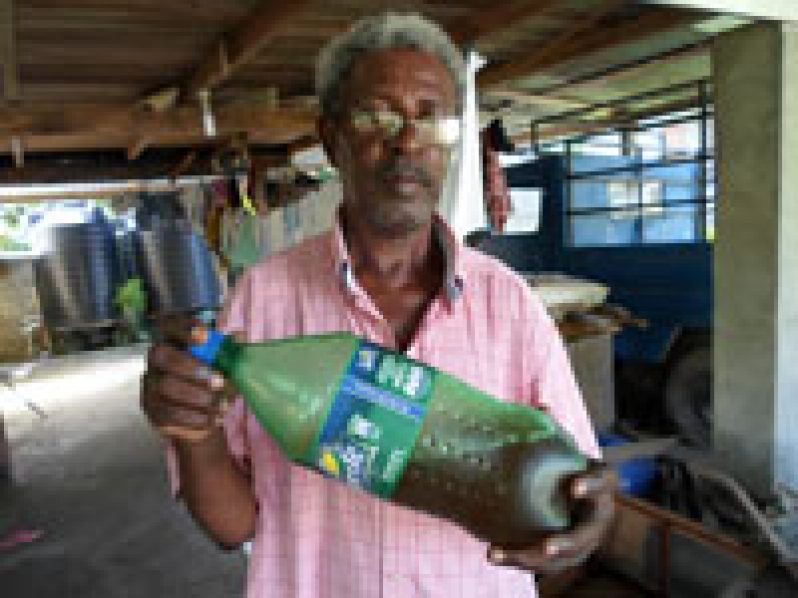TREKKING around African villages, and engaging in friendly conversation with people of African descent has, over the last few days leading up to Emancipation, been most intriguing and, indeed, quite revealing.
I opted to explore a few villages which had been bought by freed Africans, and it mostly turned out to be a virtual botanical or nature tour, which I relished even as I tried to cope with nostalgic memories of my days at secondary school under the tutelage of renowned science teacher David Osgood, an American Science Master of European 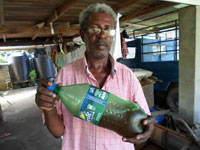 extraction.
extraction.
Dave and Carla Osgood were among the first US Peace Corps teachers who came to offer their services to Guyana. They were deployed to the school I attended, the North West Government Secondary School. Dave was thorough. This great teacher, liked by the entire class, taught us everything we needed to know on the curriculum.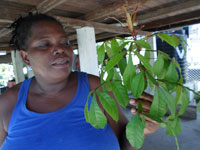
During those botanical treks, I developed a passion for things natural. We had to know the name and identity of practically every type of leaf; and in very exciting competitions, we went out leaf hunting into the nearby cluster of bushes, each aiming to be the first to get back in classroom, label the leaves we had correctly, then place them on Sir Osgood’s desk.
This time around, it was my pleasure to be taken around African villages and again exploring leaves, but this time at another level. The villagers shared with me their experiences using herbs for various kinds of ailments, and getting  amazing results. I was intrigued. It was amazing to realise just how much the villagers were willing to open up and share valuable information relating to their culture, particularly talking about the use of herbal treatments (previously referred to as ‘bush medicine’) and its impact.
amazing results. I was intrigued. It was amazing to realise just how much the villagers were willing to open up and share valuable information relating to their culture, particularly talking about the use of herbal treatments (previously referred to as ‘bush medicine’) and its impact.
Rich cultural legacy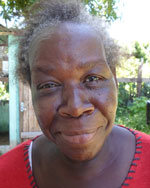
Farm Village, East Bank Essequibo, is being honoured as the Emancipation Village for 2013. Farm has a rich African cultural legacy, and the distinction of being the last village bought by freed Africans with individual earnings pooled in 1787.
During our tours, the Guyana Chronicle met Mr. Richard Waddell, called ‘Uncle Joe’, a retired village council chairman who, during a most enjoyable discussion, edified us that despite the richness of their forefathers’ heritage, a lot of valuable information in regard to natural cures was pathetically not passed down to their descendants.
At Golden Grove, West Coast Berbice, Dorothy Peters lamented that even though they now have a reasonable amount of information to work with, there are still gaps in some areas of information. The villagers are urging those with such 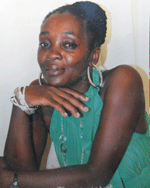 valuable information to come forward and share this wealth, so that other brothers and sisters can be empowered.
valuable information to come forward and share this wealth, so that other brothers and sisters can be empowered.
‘Uncle Joe’ explained that, to some extent, the ancestors’ failure to make such knowledge public had been due to the fact that, in those days, the colonial police would hound down anyone perceived to be a ‘bush doctor’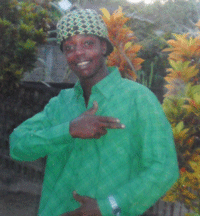 to prosecute and incarcerate. “It was an offence to be touted as a ‘bush doctor’, or even for making what was called ‘bush rum’, because if people made bush rum, it would adversely affect business for the liquor manufacturers,” he reasoned. And this explains why ‘bush doctors’ and ‘bush rum makers’ had to go into hiding, and not be open about what they were doing, even though the bush doctors meant well.
to prosecute and incarcerate. “It was an offence to be touted as a ‘bush doctor’, or even for making what was called ‘bush rum’, because if people made bush rum, it would adversely affect business for the liquor manufacturers,” he reasoned. And this explains why ‘bush doctors’ and ‘bush rum makers’ had to go into hiding, and not be open about what they were doing, even though the bush doctors meant well.
Today, we bring our readers some herbal tips shared with us by ‘bush doctors’ in the villagers we visited:
* Cure for men experiencing problems with back pain and/or erectile dysfunction: There is a variety of herbal treatments one can use, but the ‘stimmer bush-pot’ (a combination of about six different kinds of herbs, including man grass and grannie finger, with steel drops added) has proven most effective, villagers say. This potion is prepared exclusively by ‘Uncle Joe’, who hails from Farm.
Apart from relieving men of back pain associated with osteoarthritis, it has a reputation for “replacing the smile on the faces of many depressed men”.
* For prostate cancer; stoppage of water and other urinary tract infections, stinging nettle bush is best used. Boil the young plant and drink the water, or use as a tea.
* Thrush in babies: A mixture of money bush and bird pepper along with olive oil, when prepared and administered, brings about remarkable relief.
(Pix) Sister Daniels (called Danny) from the Georgetown Ward of West Ruimveldt advised on the following cure:
* For thrush in babies: First, clean the baby’s anal area thoroughly. Take a cotton swab (Q-Tip), immerse in (Canadian) Healing Oil, then dip it in honey and insert as far as possible into the child’s rectum, thereby allowing the potion to do its job. Ensure the cotton wool is removed, and a positive result is a must.
(Pix) Glerie Fraser of Belladrum, West Coast Berbice, had this to say about treating pip in fowls or chicken: Open the mouth of the chicken and throw one single bird pepper down its throat. Within a few days, the bird will be sprightly and well again.
(Pix) Dorothy Peters of Golden Grove, West Coast Berbice said that for diaper rash in babies, mothers or nannies should use a herb called ants bush because it works most satisfactorily. And for biliousness or the ‘cleaning out process’ at weekends or so, persons should use a combination of the blossom from the Carrion Crow Bush (that yellow flower on the plant) and coconut milk. Mix the two to “purge out” the system. That would give a person a good motion and keep the colon clean.
(Pix) Donna Adams, of Stelling Road, Tuschen, East Bank Essequibo said that for biliousness in children who use a lot of sweet and develop sores because they need a ‘clean out’, instead of boiling carilla bitters, just use the bitter stick in wine.
“I prefer (using) pomegranate wine. If you don’t use or have wine, soak a piece of the bitter stick in water or whatever you have, and drink a Schnapps Glass (of the concoction) early in the morning for about three mornings. You don’t have to use (it) a lot, just once at weekends.”
Adams also advised that high blood pressure (Hypertension) can be handled as follows: Use soursop. Boil especially the heart of the soursop, and drink an 8-oz glass per day. She also advised that the Tulsi is a good remedy for the common cold; it makes a nice herbal tea as well, and is good for marinating and seasoning meats.
Moreover, Adams advised that for a person wanting to break curses on their life, the African ancestors used Physic Nut leaves. They got up early in the morning, before 6:00 o’clock, and cut the plant; that was reputed to have a positive effect on demonic possession. The method of use was to soak the physic nut in water and drink one Schnapps Glass of the water at a time. It was felt that that would keep bad spirits away.
But, don’t get scared! she said. Years ago, if ever you cut the plant before 6:00 o’clock on a Good Friday, you’d see blood oozing out of its stem. This phenomenon occurred only on Good Friday, she advised. “I heard that from the old folks, and I saw that for myself,” she said.
Adams also advised that a treatment for sores or liver spots was to use the Money Bush. For anybody with sores or liver spots about their body, crush up the money bush (it’s soft), add a pinch of salt, and rub it about the body. You may also crush it up by rubbing it in the hands, then adding it to your bathing water. It keeps your skin clean, she said.
(Photo) Avril Jordan, of Stelling Road, Tuschen, East Bank Essequibo advised that for thrush in young babies, or for a great bush tea, the Congolana Bush works. Wash it and boil to make tea. As a cure for thrush in babies, wash then crush the leaves, and squeeze the juice onto the red and infected anal area of the child. It will dry up the infection. For thrush or yeast infection in adults, boil and drink Sweet-broom.
Avril said that for painful, cramping and heavy menstrual periods, women should boil Inflamation Bush or Broad Leaf Thyme in about two pints of water, and drink about 8 ounces per day for three days.
(Photo) Shelly Goodman, better known as ‘Mango Lady’, of Vergenoegen, East Bank Essequibo, said that for a heavy chest cold or threat of pneumonia, one should use Daisy. “Daisy is found in almost every village,” she said. “Pick and leave the vine of leaves out in the sun until the leaves begin to quail, or the sap is dried out. Boil for about ten minutes, allowing sufficient water to cover. The water should be dark in colour by then. Cover the pot, and leave it to cool. It’s very effective by the second day, after which you can expect to begin coughing up the phlegm (what we call cold).”




.png)


